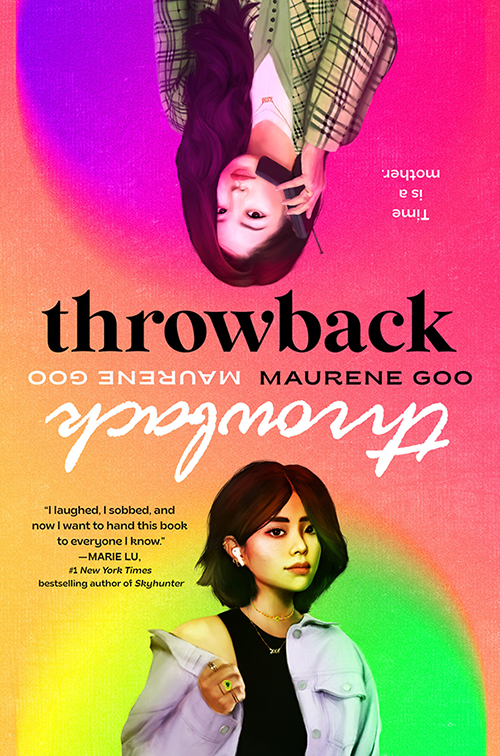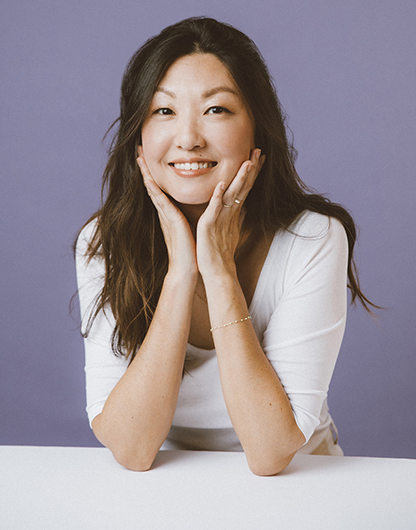By Samantha Pak
NORTHWEST ASIAN WEEKLY
Teenagers and their parents, two demographics who have been at odds throughout time. But what if you could go back in time and meet your parent as a teenager?
This is the premise of author Maurene Goo’s latest young adult (YA) novel, “Throwback,” which will be released on April 11.
 The story follows Sam, a second-generation Korean American who has a difficult relationship with her mother, Priscilla. As a former high school cheerleader, Priscilla expects Sam to be all about school spirit and have the same all-American ambitions, but this is the last thing Sam wants. Then after a huge argument, Sam just wants to get away from her mom. But somehow, the teen finds herself thrown back in time to 1995—right alongside a 17-year-old Priscilla. Now Sam needs to figure out why she was sent back in time and how to get back (and maybe learn a few things about her mom at the same time).
The story follows Sam, a second-generation Korean American who has a difficult relationship with her mother, Priscilla. As a former high school cheerleader, Priscilla expects Sam to be all about school spirit and have the same all-American ambitions, but this is the last thing Sam wants. Then after a huge argument, Sam just wants to get away from her mom. But somehow, the teen finds herself thrown back in time to 1995—right alongside a 17-year-old Priscilla. Now Sam needs to figure out why she was sent back in time and how to get back (and maybe learn a few things about her mom at the same time).
“Throwback” is Goo’s fifth novel and the first one not set in the present day. As a “Back to the Future” fan, she really enjoyed writing the time traveling elements of the story—including the expected hijinks and Easter eggs that come with the genre. Goo used the movie as a blueprint to know what beats to hit throughout her story. And while she wasn’t quite in high school during the mid-1990s, the 41-year-old does remember what was trendy during that era.
“So much glitter,” she said with a laugh. “I just remember the clothes we wore.”
Very different times
But writing about the past was about more than just the fun of dropping a tech savvy Gen-Z’er into an analog world. The 1990s were an era when casual racism was still prevalent and calling it out wasn’t as common, like it is today.
“When you’re in it, you’re just shocked,” Goo said about experiencing racism back then—even from teachers in school. “We were not empowered (to speak up).”
This world in which microaggressions run rampant influenced Priscilla’s character, who often rejects her Korean heritage. Goo also pulled inspiration from some of her older cousins—who would’ve been Priscilla’s age and felt they needed to be more white to fit in with their peers.
Goo noted how different things are nowadays as young people are more socially aware, proud of all their identities, and more accepting of people’s differences—and more likely to call out racism, as well as other forms of bigotry such as fatphobia and ableism.
“These kids speak up,” Goo said.
Connected to her younger self
For Goo—who originally thought she was going to be a journalist, but realized she’s “not intrepid and [she doesn’t] like facts”—the teenage headspace is where she’s comfortable as a writer. All of her previous novels are YA and when she tried writing from an adult point of view, it felt like work, whereas the YA space was easy to slip in—like a pair of comfortable pants.
In addition, Goo is also writing for her younger self and what she would’ve wanted to see on the shelves as a young bookworm. She still feels connected to that time in her life. The feelings and emotions she experienced as a teen have never left her, making it easy to channel the ups and downs of teenage life, and fun to write from that perspective.
“All of us didn’t understand our parents,” Goo said.
And Goo particularly understands that feeling Sam experiences. Goo’s relationship with her mother as a teen was fraught. She said it was a challenge to write about that part of the mother-daughter relationship and she had to brace herself to go back into that headspace. But now that she’s an adult, Goo felt a bit removed from that time and better understood Priscilla’s—and her own mother’s—core desire for their kids to be happy.




